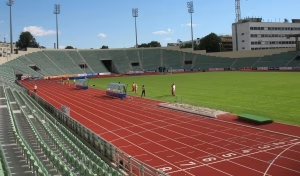Ingebrigtsen threshold training: Scientific analysis
A recent scientific paper examining Ingebrigtsen threshold training received some attention in the running and general sports media. I am glad to see this interest.
The paper is freely available here:
In this paper, Spanish researcher Arturo Casado and his colleagues ask a great question: do the following principles represent a positive advancement in training theory:
- overall high volume
- overall low intensity
- focus on threshold training guided by lactate
The greatest factor contributing to this interest of late is the international competition success of Jakob Ingebrigtsen (pictured below), winning gold at the 2021 Tokyo Olympics 1500 m and the 2022 World Championships 5000 m. However, information on the so-called Ingebrigtsen training method has been available since at least 2013.
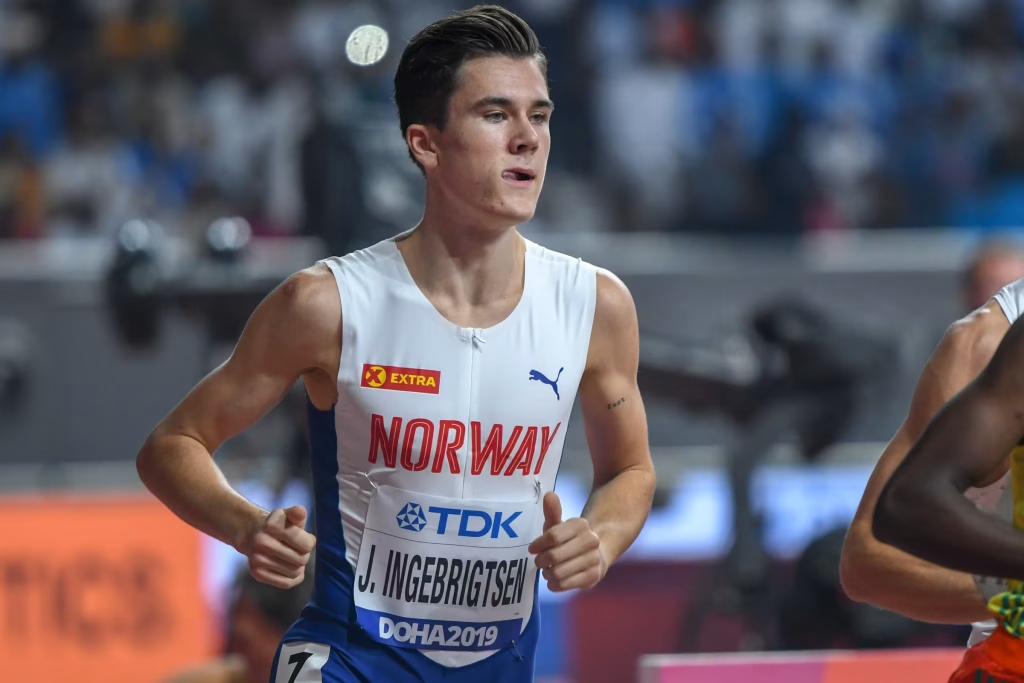
There are at least two other scientific papers that have reported on the training of the Ingebrigtsen brothers. This one is freely available:
Tjelta (2013) A Longitudinal Case Study of the Training of the 2012 European 1500m Track Champion
This one requires payment or access to an academic library:
Tjelta (2019) Three Norwegian brothers all European 1500 m champions: What is the secret?
Henrik, Filip, and Jakob Ingebrigtsen
The training of Henrik, Filip, and Jakob Ingebrigtsen has received interest for its focus on anaerobic threshold development. Although the matter of siblings training and competing together in sport is not uncommon (sporting families do this all the time), the family has received much attention because of the consistently high level performance of the three brothers.
Henrik (b. 1991) won the 2012 European Championships 1500 m. Filip (b. 1993) won the 2016 European Championships 1500m. Both Henrik and Filip are Olympians. Jakob (b. 2000) won the 2021 Tokyo Olympics 1500 m, among many other titles.
The photo below shows Filip (left) and Henrik (right) Ingebrigtsen.

Coaching during the development years
Henrik, Filip, and Jakob were mostly coached by their father Gjert. Training was carefully monitored and recorded. In their early years, the brothers achieved great success in their respective age groups and eventually all competed in world-class competitions, with much success.
Unfortunately, in late 2023, news of relationship difficulties in the family emerged. The personal dynamics of the athlete-coach relationship is crucial, but I will not address this issue here and will focus on the actual training.

Tools of training
A consistent feature of Ingebrigtsen lactate threshold training is the meticulous recording of heart rate (HR) and blood lactate. They used these physiological measurements to dial-in their training intensity to focus on lactate threshold.
This, along with records of distance provide a detailed account of training load – the sum total of intensity and volume over several years.
The tools used in the Ingebrigtsen training method are accessible to most athletes – a HR monitor and a blood lactate monitor.
HR monitor watches (usually combined with GPS these days) can measure HR at the wrist, although a separate chest strap is still probably considered to be more accurate.
A blood lactate meter is less common, but may be purchased by athletes and coaches. This device does require a finger prick to draw a drop of blood, which is similar to what type I diabetics do everyday to test their blood sugar, so it does not require medical supervision. Note – nothing in this article involves using blood lactate measurement for medical purposes.
The above tools make it possible to monitor the training intensity distribution over the different parts of the season and over different years.
Tip 1: Monitor Running Distance
If you are a younger athlete or coach of younger athletes, you need to know about the concept of long term athletic development.
The expectation of long term development is that there will be a season-by-season or year-by-year progression in the quality and quantity of training and therefore the level of performance. This applies to everyone, but it is especially important for youth athletes because their physical and mental maturation is not yet complete and training is therefore expected to increase.
A long term view is a patient view.
Older athletes who are past their physiological peak can still improve their training as well by optimizing workouts and rest.
From age 17-21 (roughly corresponding to university competition age), Henrik (the oldest) increased his peak volume from from 68 to 96 mi/week (110 to 155 km/week), according to Tjelta (2013). This corresponds to adding about 7 miles (11 km) to the weekly total as each year goes by.
Filip and Jakob had similar increases, eventually settling at 93-99 mi/week (150-160 km/week) (Tjelta, 2019). This is not too different from the common recommendations for volume and common reported training of athletes at the same level.
Tip 2: Monitor Running Intensity
Monitoring HR and blood lactate help establish zones of intensity. If you combine this with distance, you can characterize the distribution of each intensity across the entire program – each zone is a different proportion of whole.
For more information about intensity zones you can visit this article.
You can also quantify the workload of each workout session or longer period of time like a week or month. This allows you to know whether the training stimulus is “too much”. In other words, will you break down if you continue?
The following table of intensities is adapted from Tjelta (2013). Zone 2 is highly emphasized by the Ingebrigtsens.
| Zone | Lactate (mmol/L) | HR (% max) | Physiological Adaptation |
|---|---|---|---|
| 1 (easy-moderate continuous) | 0.7 – 2.0 | 62 – 82 | Recovery and running economy |
| 2 (threshold intervals) | 2.0 – 4.0 | 82 – 92 | Anaerobic threshold |
| 3 (harder aerobic intervals) | 4.0 – 6.0 | 92 – 97 | VO2 max/aerobic capacity |
| 4 (fast reps) | > 6.0 | > 97 | Anaerobic capacity (anaerobic lactic) |
| 5 (sprints and strides) | – | – | Speed (anaerobic alactic) |
Monitoring Heart Rate
HR is easy to monitor during a session. Whether you use the watch-embedded wrist measurement or a chest strap, all you do is let the running watch record the HR while the watch is in training mode. Your watch can record every beat.
You can view your HR in real time and you can look at the recorded data after your workout. Make sure your maximum HR is correct in your watch settings so the intensity zones will be calculated correctly.
When you run an interval, your HR increases and then plateaus. You want this plateau to be within the appropriate training zone. Many HR monitor watches can provide an alert if you exceed the desired HR.
Don’t use average HR during your interval because your HR takes a minute or two to rise at the beginning of each interval. Focus on the level of the plateau.
If you are viewing your training data post-workout, you can look at the HR graph.
The HR plateau for each interval should be within the desired intensity zone. In the graph below, the zone 2 target HR for this athlete is under 178 bpm. The athlete was within 1 bpm of the limit for the first interval, but exceeded this significantly in subsequent intervals. The pace should be reduced slightly next time this workout is done.
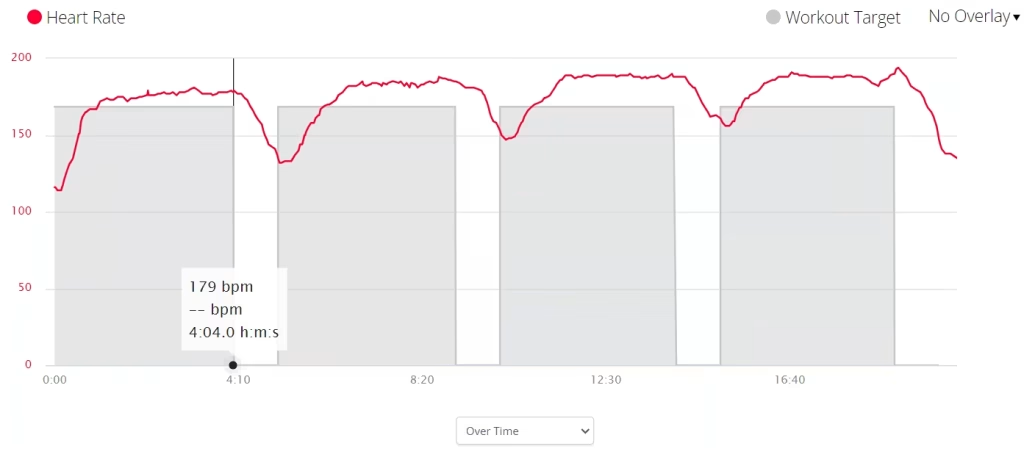
You can also read a useful guide on heart rate and training.
Monitoring Blood Lactate
Blood lactate is less convenient to record during a session. There are some skills to learn regarding the technique, but it is possible for non-medical people. Remember, diabetics use the same technique whenever they test their blood sugar. We will not include a “how to” in this article.
In Henrik’s training, lactate would be measured for some but not all intervals. For example, in a 12 ⨯ 1000 m session, he would have lactate measured after interval number 3, 7, and 12, as reported by Tjelta (2013).
Adjustments would be made so the intensity would conform to the appropriate intensity zone, zone 2 in the above example.
Generally, the goal is to not exceed a lactate limit, set before the workout. You need to be careful to get the intensity right, but it is possible to identify and maintain the correct intensity.
Tip 3: Monitor Intensity Distribution
If you take the number of miles in each zone, divided by the total for each week, you can characterize the intensity distribution.
What is the ideal distribution? Many runners like to use an easy to intense ratio of 80% to 20%.
For an athlete who runs 50 miles (80 km) per week, 40 miles (64 km) would be in zone 1 (below anaerobic threshold) and 10 miles (16 km) would be in zones 2 or above (at or above anaerobic threshold).
The Ingebrigtsen brothers instead used a higher percentage, running up to 33% of their distance at or above the anaerobic threshold during the preparation phase of training. However, this was decreased to 20% when in the competition season. The example below comes from Tjelta (2013).
I discuss lactate threshold training and testing in this article.
Below is Henrik’s intensity distribution for the week before the 2012 European Championships. He had 72% in zone 1 and 28% at zone 2 or above.
| Zone | % Total | Mi | Km |
|---|---|---|---|
| Zone 1 | 72.4 | 65.4 | 105.3 |
| Zone 2 | 20.6 | 18.6 | 30 |
| Zone 3 | 5.5 | 5.0 | 8 |
| Zone 4 | 0.8 | 0.7 | 1.2 |
| Zone 5 | 0.7 | 0.6 | 1 |
| Total | 100 | 90.4 | 145.5 |
Below is Henrik’s training intensity distribution for the next week of overall reduced volume. You can see that he also reduced the proportion of running in zones 2 and 3. There was more running in zone 1 (for recovery) and zones 4 and 5 (for sharpening).
This week ended with a gold medal in the European Championship 1500 m.
| Zone | % Total | Mi | Km | Change |
|---|---|---|---|---|
| Zone 1 | 81.8 | 50.8 | 81.8 | more |
| Zone 2 | 7.8 | 4.8 | 7.8 | less |
| Zone 3 | 4 | 2.5 | 4 | less |
| Zone 4 | 4.6 | 2.9 | 4.6 | more |
| Zone 5 | 1.8 | 1.1 | 1.8 | more |
| Total | 100 | 62 | 100 | less |
Sample workouts: 3 great suggestions
The Ingebrigtsen brothers use a range of different paces for their zone 2 workouts. How is this possible?
The answer is that the faster paces have shorter durations and the slower paces have longer duration. Remember that although we can use HR to help guide the intensity, the focus of this philosophy is keeping blood lactate within acceptable values.
Generally speaking, a blood lactate value of 4.0 mmol/L is considered the limit for threshold training, although the actual physiological threshold varies with the individual. The Ingebrigtsens often targeted 2.5 mmol/L for the longer intervals and 3.5 mmol/L for the shorter intervals.
All of this was with the goal of carefully and strategically limiting the physiological intensity, and promoting the desired balance between intensity and volume.
Here are 3 staple workouts for zone 2 (Casado et al., 2023):
| Pace | Intervals | Rest | Blood Lactate |
|---|---|---|---|
| 5000 m | 25 ⨯ 400 m | 30 sec | 3.5 mmol/L |
| 10,000 m | 10 ⨯ 1000 m | 1 min | 3.5 mmol/L |
| Half-marathon | 5 ⨯ 2000 m | 1 min | 2.5 mmol/L |
Astute readers will wonder how running at 5000 m and 10,000 m race pace can be considered threshold training. Isn’t that too fast?
The answer is that the duration of the running interval is too short for the blood lactate level to rise above the threshold level of about 4.0 mmol/L. And the duration of the rest interval is not long enough for blood lactate to return to zone 1 levels (i.e., below 2.0 mmol/L or so).
So, you are essentially controlling blood lactate by modifying the work-to-rest ratio. There is another benefit too – instead of just doing a continuous run at a slightly lower-intensity at the appropriate lactate level, you get the added bonus of a faster absolute speed with all its training benefits for strength and biomechanics.
Why Does It Work?
This is where it gets difficult.
It is very challenging to compare with certainty the benefit of subtle changes to the training of a world-class athlete. Few researchers would be permitted to change the training of a world-class athlete for the sake of science. That’s why most papers report on training that has already been completed – a case report.
The belief of coach/father Gjert Ingebrigtsen is that it is best to emphasize more zone 2 and less zone 3 and 4, at least outside of the pre-competition and competition phases of training.
The principle is that intensities above the lactate threshold are disproportionately more stressful to the athlete for the benefit, and there is some basis for this in the scientific literature. As Casado et al. (2023) explain, a lower intensity may reduce central and peripheral fatigue. When that happens, you can do a greater volume.
I will also mention here a key influencer of this type of training – Marius Bakken.
Marius (pictured below; middle) is a Norwegian Olympian who is now a medical doctor. He ran 13:06 in the 5000 m in 2004. He argues passionately for this style of training on his website, and was following this approach earlier than the Ingebrigtsens. He is also a co-author of the most recent scientific paper that I refer to above.
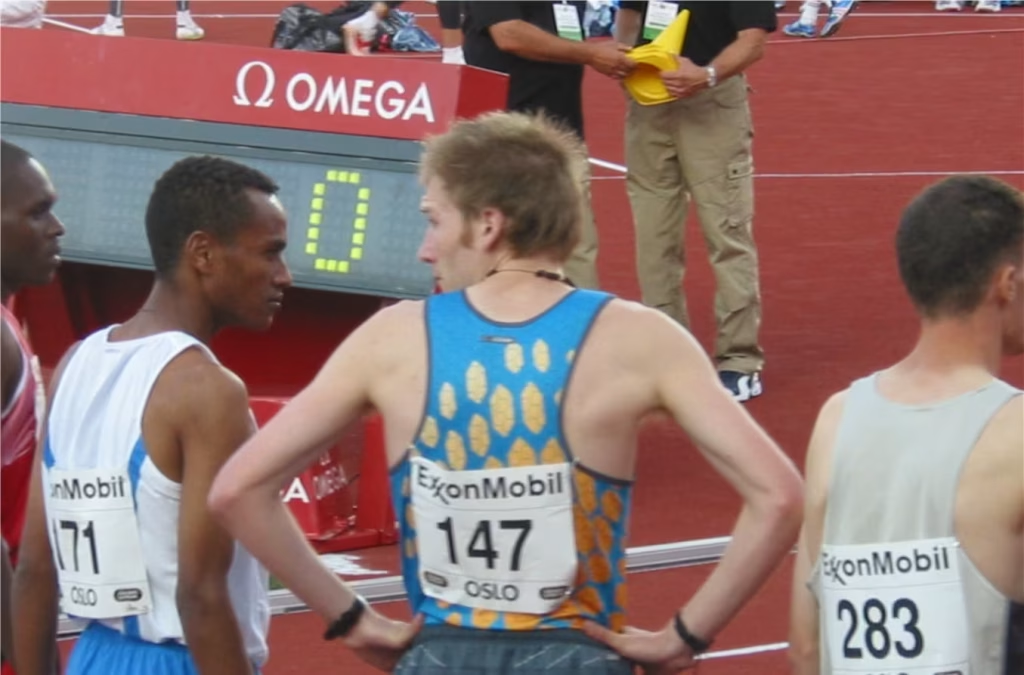
On his website, Marius describes his communications with Gjert Ingebrigtsen about training programs, although there is apparently some disagreement about the true extent of that communication. At any rate, now you know the major players who have promoted this type of training.
If you want to know more about how this training has flourished in Norway, I have written a treatment of that in this article.
Weekly Training Plan
The Ingebrigtsens typically assemble this training so that every week they are doing 3-4 lactate threshold sessions and one session to improve VO2 max.
The threshold sessions are done as doubles – one threshold workout in the morning and one in the evening. Easy days of running only in zone 1 comprise the recovery days.
Apart from the VO2 max workout, low intensity zone 1 running allows an overall volume of 93 – 112 mi/week (150 – 180 km/week), according to Casado et al. (2023).
Unless you are an elite distance runner, you probably won’t do double-threshold sessions. But you can still use the principle of emphasizing threshold work when you are outside your competition season.
During periods of preparation, the higher percentage of threshold work compared to easy running, while limiting zones 3-5, may allow you to lower your overall training stress while still providing a superior training stimulus.
Once you move into your competition season, threshold sessions may be reduced to 2 per week to allow room for the increased stress from more intense training in zones 3-5.
Conclusion
Adherents of this Norwegian style of training believe strongly that lactate-guided training provides crucial guidance on running intensity for training outside the competition season. Limiting the intensity allows for the accumulation of more volume at sub-threshold and threshold paces, and may provide a superior training stimulus for this reason.
Direct blood lactate measurement is best, but much can be done with a careful adherence to HR training zones. If this will be your approach, I would encourage you to stick to the zones and be very aware of how your body feels.
Rapid breathing, muscle burning, and general fatigue development are all indicators of physiological intensity. Train to improve your running pace, but also develop your ability to monitor your mind and body during training and racing.
Sub-threshold and threshold training is not a white-hot, out-of-breath level of intensity. It is in-control and sensible. It is the way followed by the patient, intelligent athlete. Teach yourself what this means using the approach above.
This will help you dial in your program for the best improvement without overtraining. And that leads to optimal performance.

